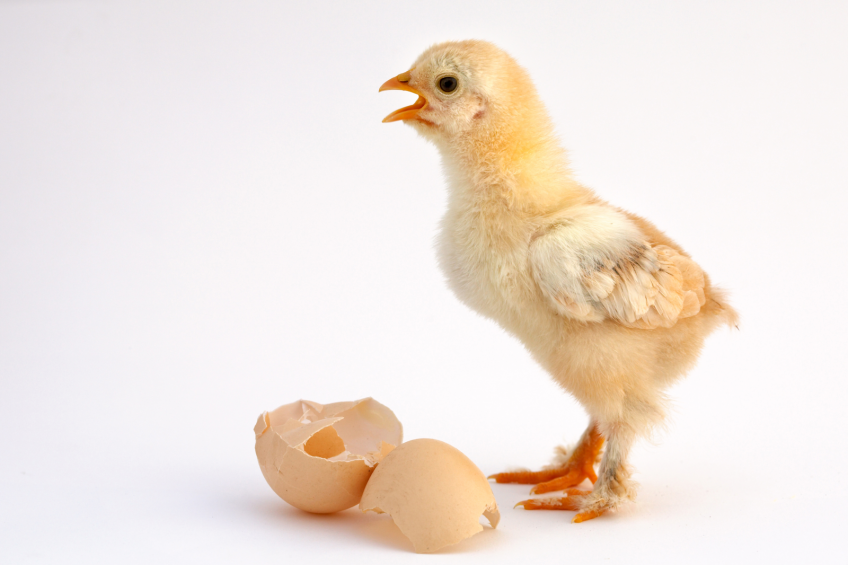Better turnıng, more chıcks

Long term storage of hatching eggs has been frequently reported to increase embryonic mortality while depressing hatchability and broiler live performance. Turning broiler hatching eggs four times daily during pre-incubation storage improved hatchability, especially in eggs from older broiler breeder flocks.
The practice of turning eggs during incubation has been of practical interest since the first observations of the incubational behaviour of feral fowl were made. Turning has been found to be essential for optimal development of the extra-embryonic membranes, consumption of albumen by the embryo, and achievement of correct orientation of the embryo within the egg prior to hatching. Generally, in practice, all hatching eggs should be turned hourly through an angle of 90o for 18 days (E0-E18) of incubation. Nevertheless, failure to turn eggs properly remains a frequent cause of reduced hatchability and chick quality.
Four main aspects of turning have been identified as being integral to the ultimate success of incubation; turning during storage, critical periods for turning during incubation, turning frequency during incubation and turning angle during incubation. This first article in a series will focus on turning during storage. Tips gained from scientific research can be practically applied as all of the incubation were conducted in commercial single stage equipment in commercial hatcheries.
Turning During Storage
Long term storage of hatching eggs has been frequently reported to increase embryonic mortality while depressing hatchability and broiler live performance. Excess water loss and albumen degradation have been related to increased embryonic mortality during extended storage. It has been demonstrated that the most obviously dynamic egg component during post-ovipositional egg handling and storage was the albumen. It can even be stated that optimum management of egg storage required optimum management of albumen quality. The albumen pH at oviposition was reported to be about 7.6, which was slightly more basic than the uterine fluid and increased to about 9.0 during storage when dissolved carbon dioxide diffused out of the shell as the embryo produced ammonia, both of which would accelerate albumen liquefaction. However, yolk pH has been found to be about 6.0 throughout storage and contained no carbon dioxide. The quality of albumen has also been reported to decline with hen age. Younger flocks have better albumen quality than older flocks. Albumen quality and probably the distance of the blastoderm from the eggshell was also maintained longer in young flocks. This probably explained why eggs from older flocks can and should be set quicker than eggs from younger flocks. The decline in fertile hatchability associated with prolonged hatching egg storage can be ameliorated by a number of egg management schemes. One of the options can be turning eggs during storage.
Beneficial effects
A series of experiments were conducted to evaluate the effect of turning eggs during storage on hatchability of fertile eggs. Turning broiler hatching eggs four times daily during pre-incubation storage improved hatchability of fertile eggs in eggs from older broiler breeder flocks when the egg storage length was 14 days versus 3 days (Table 1) but a consistent result with eggs from younger broiler breeder flocks was not obvious (Table 2). These data demonstrated that beneficial effects of turning during storage must be associated with some change in the egg. The most likely explanation was that turning somehow ameliorated certain negative changes that happened during storage within fertile hatching eggs.
In some instances it may not be possible to manipulate eggs during storage so management alternatives once incubation was initiated to help recover some of the lost hatching potential were needed. Thus, we conducted two trials to examine the interaction of length of egg storage and turning frequency during subsequent incubation on fertile hatchability of eggs from older broiler breeders (Table 3). The theory was that it may be possible to ameliorate certain negative effects of long storage by increased turning frequency during subsequent incubation. These data show that the detrimental effects of a long storage period may be practically ameliorated by an increased turning frequency during subsequent incubation. So, one does not have the opportunity to implement appropriate management during prolonged egg storage, increased turning frequency during subsequent incubation may be the only option.
Older breeding flocks
The beneficial effects of egg storage and incubation turning frequency of eggs from older breeder flocks were more evident in eggs stored for 14 days versus 3 days (Table 3). One possible mechanism for this effect may lie in the juxtaposition of the albumen and shell membranes, because significant changes in albumen pH, albumen thickness, and water loss during storage have been documented. These changes could create an environment that would not be optimally receptive to the growth of the chorioallantoic membrane but may have been overcome by an increased frequency of turning. An associated mechanism may lie in the role of the albumen in buffering or sequestering the ammonia, a toxic waste product, produced by the blastoderm.
Research by Stern demonstrated that differences in pH between the yolk and albumen and across the blastoderm were responsible for several membrane-based transport and exchange processes vital to the optimum development of the embryo. During long-term storage, the buffering capacity of the albumen must be reduced and the trans-blastoderm difference increased such that an increased turning frequency may have allowed the blastoderm to interact with a greater quantity of fresh albumen in such a manner as to promote embryonic development. Turning has been found to be most critical in the early stages of incubation but poor turning affects all stages of embryo development. This was true for turning during either storage or incubation, especially in older flock eggs.
 Beheer
Beheer




 WP Admin
WP Admin  Bewerk bericht
Bewerk bericht